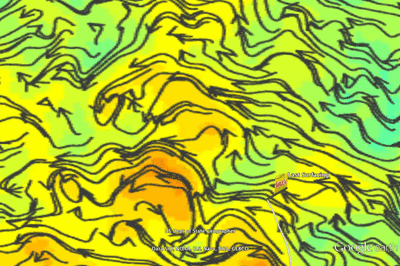Hey All!
As we finish the final preparations for Antonio’s award ceremony and travel plans for this weekend, our Global Glider fleet continues to make progress flying the North and South Atlantic Basins.
To the North, Silbo is chugging along, slowly making his way towards the Caribbean:
Now just under 1500 km away, Silbo has his sights on the finish line and is continuing to battle through the currents towards the tropical shores of Barbados.
Looking to Pinzon’s visualization of the HyCOM currents (above and below), the waters at depth continue to be largely unfavorable as they flow to the Northeast, slowing our progress towards the Caribbean to our west. We can only hope that these negative currents do not persist much longer as Silbo has now been flying for over 270 days, 50 more than it took Scarlet to cross from NJ to Spain!
To the South, Challenger is continuing to be a beast as she is now cruising through the waters of the South Atlantic
Below, we can see that as the currents are continuing to swing further into our favor, our speed has dramatically increased, shown by the spike in the blue line.
With the depth average currents over the top 1000m of the water column now showing a northern component to the eastern flow that Challenger has been fighting, we have been able to take advantage of even that little extra push allowing speeds of over 25 km/day! These speeds, if we can maintain them could get us to Brazil somewhere around December, leaving us with a good two months of wiggle room with our battery packs.
Force Wind Sea & Honor












































